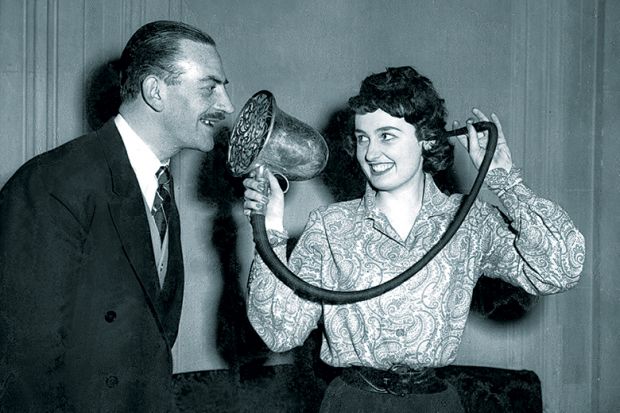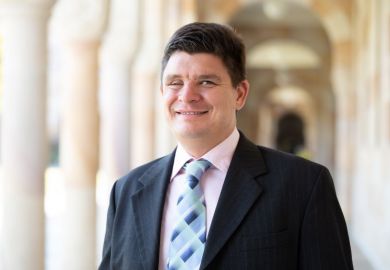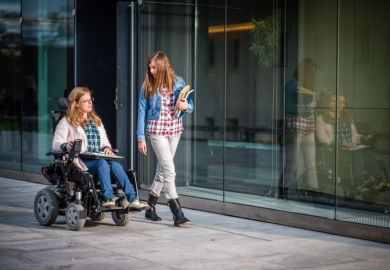One of the goals of disability and Deaf studies is to spread the word that impairments are not the rare, uncommon condition that most people imagine. In fact, one in five people have or will have a disability, and the same proportion will experience diminished hearing over the course of a lifetime. When you add in friends and family members, almost everybody will have direct experience of disability and/or deafness. That reality makes disabled people the largest minority in most cultures.
The most striking thing about Jaipreet Virdi’s book is how it confirms that hearing loss isn’t a minor annoyance that afflicts a few people. Rather, with tremendous archival work, she shows us that, over the past three centuries, Anglo-American culture has been virtually obsessed with trying to cure deafness. The deaf person becomes the icon of the diminished citizen. The sheer number of nostrums, remedies, devices and surgeries devoted to the remedying of hearing loss is staggering. Yet the economic investment and advertising outreach are also indications of a more general insistence that deafness is a misery, that cure is a necessity and that hearing provides “happiness”.
The author herself has a profound hearing loss, and so her account of deafness cures includes elements of memoir. Of Indian descent, Virdi was born in Kuwait and contracted meningitis at the age of four. She tells us about the distress of her parents, who took her to the Sikh temple, dosed her with herbs and tinctures, hauled her off to shamans and doctors in India and the UK. Eventually the family emigrated to Canada, where she went through years of being fitted with hearing aids and getting speech lessons.
In other words, of cures and nostrums, she has both deep archival knowledge and deep personal involvement. The book weaves both strands together, although most of it is on the academic side of things. There are a few moments in which the scholar becomes the object of study. The best of these is a visit to a museum to try out a 19th-century hearing horn, which delights Virdi, who manages to wangle use of the device despite the ill will of the archive’s docent.
As in many books of its kind, the strength of the work is also occasionally a problem. The author has unearthed a treasure trove of cures, nostrums and devices, which range from useless to occasionally helpful. Yet the sheer number of people and devices is sometimes mind-numbing, although Virdi does her best to add colour and liveliness to her history of failed cures.
The final section deals very nicely with the “success story” of electronic hearing aids and eventually cochlear implants (CIs). The section on the latter presents both the technology and the evolving reaction of the Deaf community to the medico-technological force of the audiology industry. CIs and other kinds of brain implant are probably the wave of the future in the desire to cure deafness. But the Deaf community, while it may want assistance, may not want to be cured of its existence and history. That dynamic is always at play, as Virdi so elegantly shows, in the desire of the hearing world to cure itself of the world of deafness.
Lennard Davis is professor of disability and human development at the University of Illinois at Chicago. His many books include Enforcing Normalcy: Disability, Deafness, and the Body (1995) and an edition of his parents’ correspondence Shall I Say a Kiss?: The Courtship Letters of a Deaf Couple (1999).
Hearing Happiness: Deafness Cures in History
By Jaipreet Virdi
University of Chicago Press, 328pp, £20.71
ISBN 9780226690612
Published 25 August 2020
Register to continue
Why register?
- Registration is free and only takes a moment
- Once registered, you can read 3 articles a month
- Sign up for our newsletter
Subscribe
Or subscribe for unlimited access to:
- Unlimited access to news, views, insights & reviews
- Digital editions
- Digital access to THE’s university and college rankings analysis
Already registered or a current subscriber? Login






